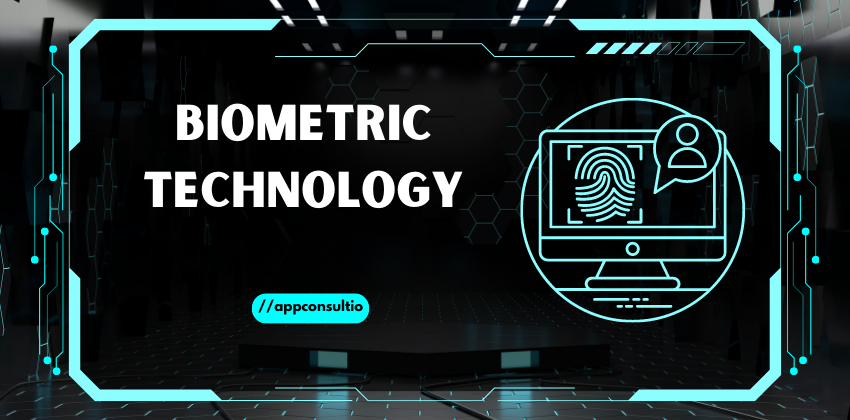
Biometric technology is a way to figure out who someone is or confirm their identity based on their physical or behavioral traits. Imagine traits like the way your hand or finger looks, your face, or even your eye pattern. These are called physiological traits. There are also learned traits, like how you sign your name or type on a keyboard. When you use biometric authentication, a computer compares a trait you've registered before with a new one you provide, like when you touch a fingerprint scanner. This is a bit like having your fingerprints checked at the entrance.
Biometric recognition can work in two main ways. Identification mode looks at a trait and tries to find a match from a big list of registered people. Think of it like looking through a crowd to spot someone. Verification mode, on the other hand, confirms if a person's claimed identity matches their registered pattern. It's like making sure a puzzle piece fits where it's supposed to be. A biometric can be any measurable trait, like something physical or related to how you behave, that helps identify or confirm who you are. Examples of physical biometrics include fingerprints, the shape of your hand, your face, or even the patterns in your eyes. Behavioral biometrics cover your voice, signature, how you type, or even how you walk.
Fingerprints - Fingerprints have been used for a very long time to tell people apart. Each person's fingertip has a special pattern of lines and spaces. Even identical twins have different fingerprints. These patterns never change, making them great for identifying people.Soon, new technology could make fingerprint scans cheaper and more common. This could mean using fingerprints to unlock laptops and phones. Because fingerprints are often linked to police work, some people might not feel comfortable using them. Fingerprint biometrics is like a digital version of the ink-and-paper method that police use. Fingerprint biometrics are used in three main areas: large databases for law enforcement, stopping fraud, and giving access to places and computers.
Palm Print Recognition - Just like fingerprints, the palms of your hands have patterns of ridges and valleys that are unique to you. These patterns can be used to recognize you. Different types of sensors, like optical, capacitance, ultrasound, and thermal, can capture images of your palm. Depending on how detailed the sensor is, it can capture everything from the ridge and valley patterns to the lines and wrinkles on your palm, as well as measurements of your hand's shape.
Palm print recognition is being used more in businesses and law enforcement. Just like fingerprints, palm prints are unique to each person, but they can be affected by wear and tear. Because palms cover a larger area than fingerprints, their features are even more distinct. The unique points on the palm's surface, called minutiae, are even more distinctive than the ridge patterns.Collecting palm prints can be made better by getting feedback from users about how to position their hand. This technology is considered very accurate, but the quality of the images can affect how well it works. Matching using minutiae is more accurate than other methods, but it might take a bit longer.
Signature Recognition - Each person has their own special way of writing their name, which makes their signature unique. However, there can be a little variation in how someone signs their name. Despite these differences, researchers have created successful systems for using signatures to verify identities. Devices that use signature verification are quite accurate, but not accurate enough to identify specific people in a big group. Still, they work well enough to replace a PIN when using ATMs.
There are two ways to use signatures for identification: static and dynamic. Static signature verification only looks at the shape of the signature, like how slanted the letters are, how wide they are, and how much space is between lines and words. Dynamic signature verification looks at both the shape and how someone writes, like the speed and pressure they use. Dynamic verification needs a special pen. It's tough to fake because it's really hard for someone to copy both the shape of a signature and the way another person signs their name. The great thing about using signature verification is that a signature is already a way to prove who you are. It's easy to add this technology to things we already do, like credit card transactions.
Facial Recognition - Facial recognition is a technique that's quite familiar to us. We use it all the time to recognize others. In the world of biometrics, facial recognition is an active area of study. It has many applications, from identifying people using still images of their faces to recognizing faces that are moving or in complex backgrounds, like in videos or movies.
When researchers work on facial recognition, they focus on both specific and general facial features. Specific features include the eyes, eyebrows, nose, lips, and chin. More generally, they analyze the overall face and break it down into smaller parts. However, they're not sure if just the face is enough to accurately recognize a person in a large group. Some facial recognition systems require specific conditions for capturing facial images, like a simple background or special lighting. Facial recognition has been used in different projects. It's been applied to identify card counters in casinos, shoplifters in stores, criminals in certain areas, and even terrorists in different countries.
In conclusion, biometric technology offers a fascinating and reliable way to identify and verify individuals based on their unique physical and behavioral traits. These traits, ranging from fingerprints and palm prints to signatures and facial features, provide a distinct identity for each person. Biometric authentication involves comparing registered traits with real-time inputs to confirm identity, making it a secure method for access control.